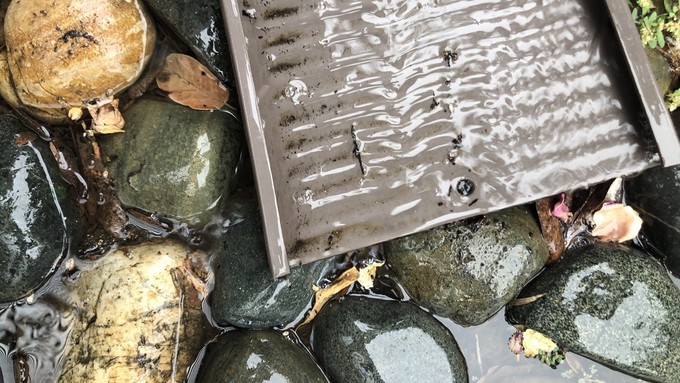
So far, 2022 among driest years in city's history

The downspouts and street gutters are full of rainwater -- at least today. Take this opportunity to note how the landscape is handling real rain. Kathy Morrison
November started with something Sacramento has seen little of this year: Rain!
Tuesday morning, the National Weather Service upped its original storm prediction from 0.1 inch to 0.25-0.5 inch – enough to turn off irrigation for at least a few days.
Rain is normal in November, the second month of our annual water year and the start of our usual rain season. November rain totals typically average just over 2 inches in Sacramento.
But there’s been nothing typical about our weather lately. 2022 most likely will go down as one of our driest years on record.
How dry has 2022 been? October had no measurable precipitation in Sacramento. We were also rainless in August and received barely a trace (0.01 inch or less) in February, May and July.
The first 10 months of 2022 have totaled 2.45 inches – almost 10 inches below normal for that period.
For more Sacramento area weather information and forecast: https://www.weather.gov/sto/#
To reach our annual average of 17.65 inches by Dec. 31, Sacramento will need 12.2 inches in two months. November and December are two of our rainiest months, averaging 5.32 inches for that 61-day period. But even double that amount will leave us far short of “normal.”
All that dry weather may have changed your landscape’s ability to cope with real rain. With so little deep-soaking moisture this year, soil may have become rock hard. (I know that’s true for sections of our lawn.) Watch out for runoff during heavy cloudbursts.
During this storm, note how your landscape is handling the water. Is it pooling or running off? Can it soak in? Make note of problem areas. (The solution may be more mulch or compost.)
Remember to irrigate plants that rainwater may have missed, particularly under large trees or eaves.
Most likely, the winds that accompanied this rain knocked down a lot of leaves. (November also marks the start of Sacramento’s leaf season.) Remember to rake leaves away from gutters and storm drains, too.
After so much drought, we’ll take any rain we can get. This storm may not produce a huge total, but it’s a start.
Comments
0 comments have been posted.Sacramento Digs Gardening to your inbox.
Food in My Back Yard Series
May 6: Maintain soil moisture with mulch for garden success
April 29: What's (already) wrong with my tomato plants?
April 22: Should you stock up on fertilizer? (Yes!)
April 15: Grow culinary herbs in containers
April 8: When to plant summer vegetables
April 1: Don't be fooled by these garden myths
March 25: Fertilizer tips: How to 'feed' your vegetables for healthy growth
March 18: Time to give vegetable seedlings some more space
March 11: Ways to win the fight against weeds
March 4: Potatoes from the garden
Feb. 25: Plant a fruit tree now -- for later
Feb. 18: How to squeeze more food into less space
Feb. 11: When to plant? Consider staggering your transplants
Feb. 4: Starting in seed starting
Sites We Like
Garden Checklist for week of May 11
Make the most of the lower temperatures early in the week. We’ll be back in the 80s by Thursday.
* Plant, plant, plant! It’s prime planting season in the Sacramento area. Time to set out those tomato transplants along with peppers and eggplants. Pinch off any flowers on new transplants to make them concentrate on establishing roots instead of setting premature fruit.
* Direct-seed melons, cucumbers, summer squash, corn, radishes, pumpkins and annual herbs such as basil.
* Harvest cabbage, lettuce, peas and green onions.
* In the flower garden, direct-seed sunflowers, cosmos, salvia, zinnias, marigolds, celosia and asters. (You also can transplant seedlings for many of the same flowers.)
* Plant dahlia tubers.
* Transplant petunias, marigolds and perennial flowers such as astilbe, columbine, coneflowers, coreopsis, dahlias, rudbeckia and verbena.
* Keep an eye out for slugs, snails, earwigs and aphids that want to dine on tender new growth.
* Feed summer bloomers with a balanced fertilizer.
* For continued bloom, cut off spent flowers on roses as well as other flowering plants.
* Add mulch to the garden to maintain moisture. Mulch also cuts down on weeds. But don’t let it mound around the stems or trunks of trees or shrubs. Leave about a 6-inch-to-1-foot circle to avoid crown rot or other problems.
* Remember to weed! Pull those nasties before they set seed.
* Water early in the day and keep seedlings evenly moist.